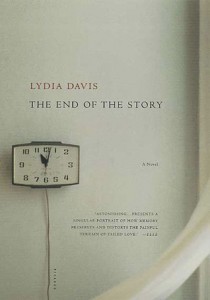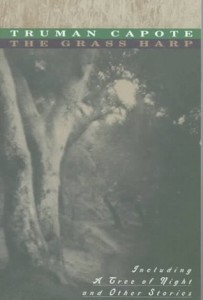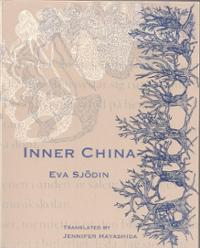Memoir of an Expat
Richard Clark first moved to Crete to teach in the 1980s and he’s returned time and again. What this does for the book is give a loving portrait through time of the people and places of Crete. He is both part of the culture and not and what could have been a guidebook turns into a personal story. Together with Clark, you get to experience the philoxenia, the kindness of welcoming strangers. He doesn’t tell you about how locals might buy you a drink or offer you water, he shares endearing stories about the many many times it’s happened to him all over the island.
Cretan Mythology
Woven into the narrative are reminders and retellings of your favorite Greek myths and where they happened. Zeus was born on Crete and hid here from his father, Kronos, before he overthrew him. He seduced Europa nearby and fathered King Minos. Remember the minotaur? You’ll feel the story come alive as Clark visits the remains of the palace where that story originated. I even learned some things about Icarus I didn’t know.
History of Crete
From Chania, a town that’s been inhabited continuously for 5,000 years to the ruins of a palace abandoned in 1900 BC, Crete has an incredibly rich history. The island has been under Byzantine, Venetian, and Ottoman rule and parts of The Odyssey are thought to have been set here. Clark does a nice job of summarizing how these waves of influence have shaped each location and the people at large. There’s even an essay at the end on the current Greek fiscal crisis.
Geology
No less turbulent than the politics, Crete’s geologic history has included a major volcanic eruption, a part of the island that’s sinking, and an upthrust that caused one major port to rise above sea level and become uninhabitable. Reading about these violent changes somehow made the island seem even more enticing to visit.
Travelogue
At it’s heart, this book is a travelogue and you’ll learn words like “ouzerie” (place that serves ouzo) as you salivate over goat salads and Greek coffees. Clark describes the unique aspects of town after town and somehow manages to not make it all repetitive. You’ll get to know local characters like Nikos Kazantzakis and Ross Daly. Clark even touches on a few of the surrounding islands including Santorini for good measure.
If you’re looking to finally plan a trip to Greece or just need to read about someplace else, try Crete: A Notebook. You’ll learn more than you can imagine and be entertained all the way through.
 The first novel by Lydia Davis, The End of the Story, is both a book about the end of a love affair and a book about writing a book. The first sentence folded into itself wonderfully, “The last time I saw him, though I did not know it would be the last…” The next couple of pages were spare and striking, but eerily familiar, like I’d read them before. It turns out that I had, and in fact Davis repurposed many of her shorts to compile this novel. I find that odd. Although I believe each writer has his or her obsessions and we write about the same themes over and over (sometimes even when we try not to), I like to think that each piece of work has a natural form that we are trying to shape the work into. This vague reworking of previous material seems like treating your own writing like “found” writing and I can’t imagine having the distance from my pieces to do that. But I also believe that Davis is in complete control of her tools, so I kept reading…
The first novel by Lydia Davis, The End of the Story, is both a book about the end of a love affair and a book about writing a book. The first sentence folded into itself wonderfully, “The last time I saw him, though I did not know it would be the last…” The next couple of pages were spare and striking, but eerily familiar, like I’d read them before. It turns out that I had, and in fact Davis repurposed many of her shorts to compile this novel. I find that odd. Although I believe each writer has his or her obsessions and we write about the same themes over and over (sometimes even when we try not to), I like to think that each piece of work has a natural form that we are trying to shape the work into. This vague reworking of previous material seems like treating your own writing like “found” writing and I can’t imagine having the distance from my pieces to do that. But I also believe that Davis is in complete control of her tools, so I kept reading… Maybe the reason you can’t go home again is that you can never see all of what it was—you could only glimpse one angle of it and as you age you see another and then another, but the place you grew up and the people you grew up with are amalgams of all the ways you see them over time. That’s how I felt when reading The Grass Harp by Truman Capote before, during, and after a trip to my hometown, Moscow, Idaho.
Maybe the reason you can’t go home again is that you can never see all of what it was—you could only glimpse one angle of it and as you age you see another and then another, but the place you grew up and the people you grew up with are amalgams of all the ways you see them over time. That’s how I felt when reading The Grass Harp by Truman Capote before, during, and after a trip to my hometown, Moscow, Idaho. Frequent readers of this blog will know how much I appreciate spare language. Inner China by Eva Sjödin and translated from the Swedish by Jennifer Hayashida shows brilliantly just how much horror can be wrought with the sparest of language. The story of two small children who hide in the woods to escape sexual abuse is remarkably restrained. And therein lies the power of this poetry.
Frequent readers of this blog will know how much I appreciate spare language. Inner China by Eva Sjödin and translated from the Swedish by Jennifer Hayashida shows brilliantly just how much horror can be wrought with the sparest of language. The story of two small children who hide in the woods to escape sexual abuse is remarkably restrained. And therein lies the power of this poetry.